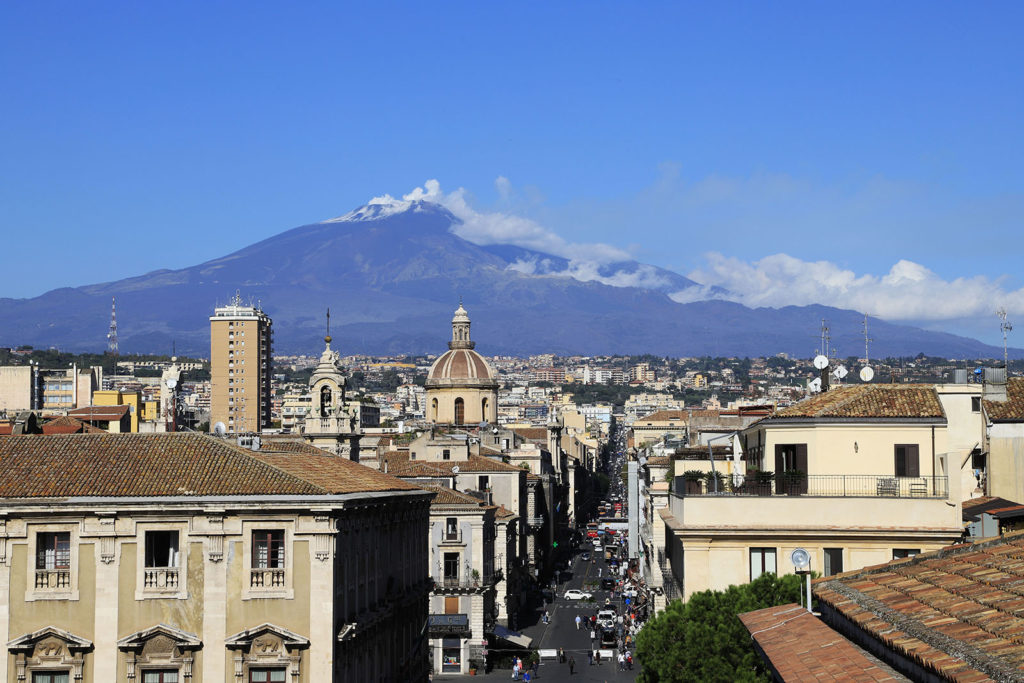The city of
Catania
is located in eastern Sicily, overlooking the Ionian Sea, and lies on the slopes of Mount Etna.
 The people of Catania are deeply attached to the volcano, a symbol of the city, but it is also the cause of immense disasters such as the eruption in 1669.
The people of Catania are deeply attached to the volcano, a symbol of the city, but it is also the cause of immense disasters such as the eruption in 1669.
In 1693, a violent earthquake struck Catania and destroyed it completely; only the walls, fortifications and some ancient buildings survived. The people of Catania then had two options: abandon the old city forever, or focus their energies on rebuilding it on the same site.
Given its strategic position for trade between the coast and further inland, they decided not to change location and so began an extraordinary rebirth.
All state, religious and secular authorities participated in the reconstruction, demonstrating remarkable organisational capacity.
Under the supervision of the
Duke of Camastra
, a reconstruction and restructuring plan was implemented, which still forms the urban fabric of Catania today. The current Piazza Duomo was recognised as the central point around which the new main roads were designed.